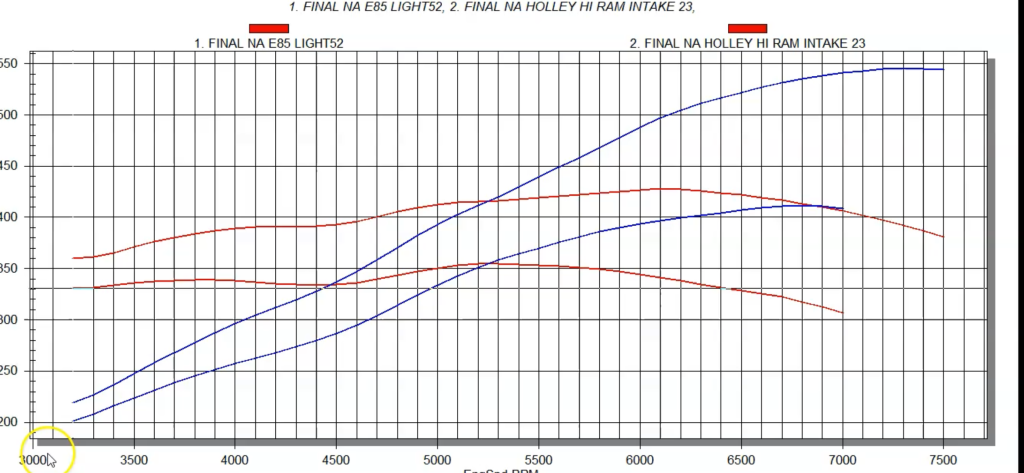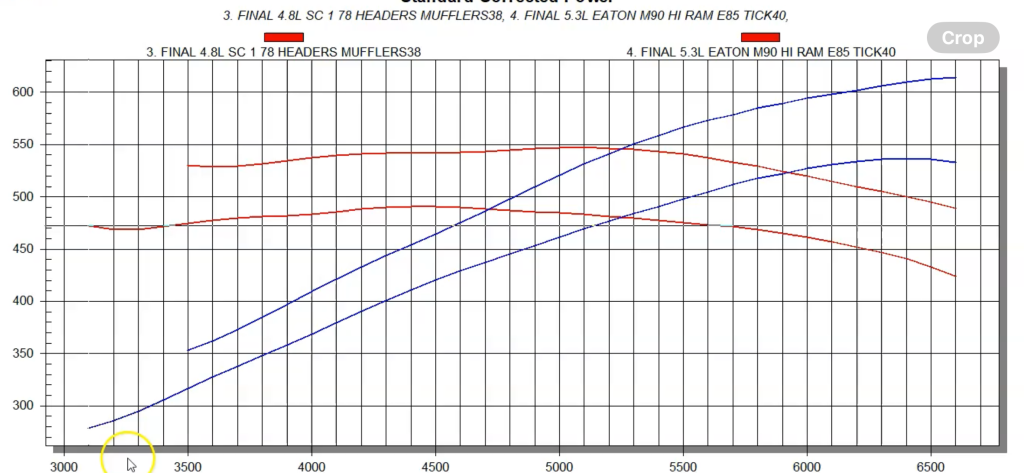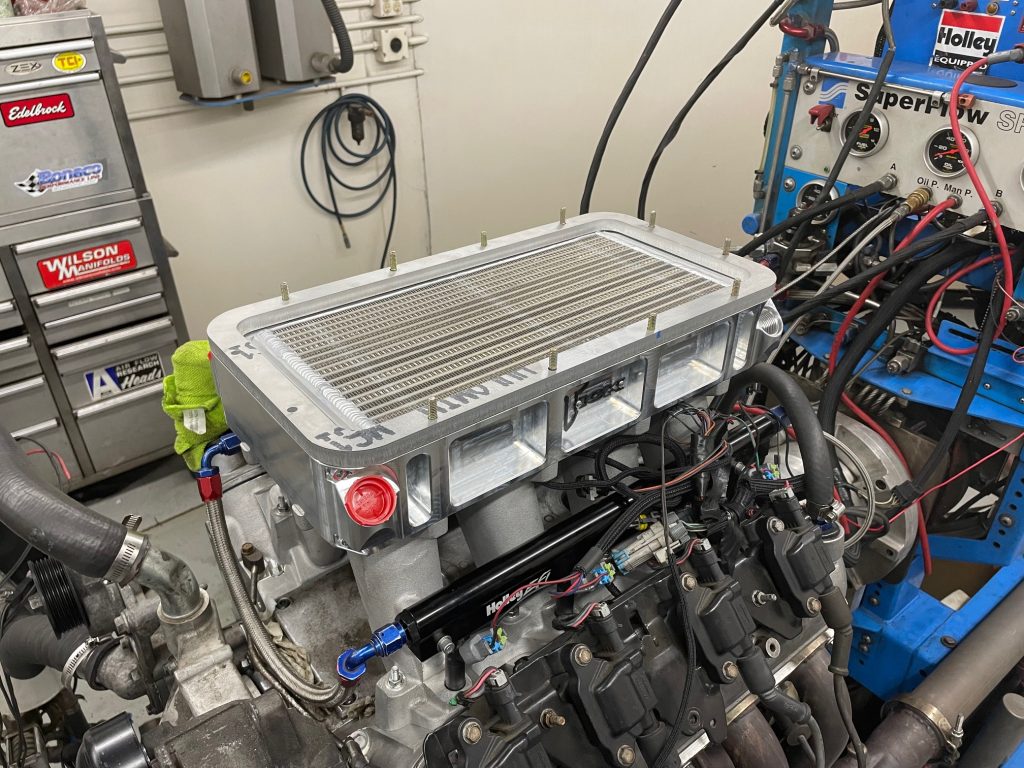What is the best way to make more power with a supercharger?
The most obvious answer is to simply to add more boost, right? I mean if seven psi is good, then ten psi must be even better! This stands to reason, as more boost usually adds more power.
But what happens when you can no longer add boost? What happens when you are at or near the rpm and/or flow limit of the supercharger? What happens when you can’t simply crank up the blower speed to add boost? Does that mean there is no more power to be had?
The reality is that the flow rate of a supercharger is a function of many things, including the size of the blower, the speed of the blower, and (drum roll please…) the power output of the motor you apply the blower to!
Working with blower size and speed (relative to engine speed), the final element helps determine the boost pressure supplied by the blower. Since boost is actually a measurement of a restriction inherent in the system, lowering boost (at the same blower size and speed) can actually improve the flow and power supplied by said blower.
What manner of sorcery is making more power with less boost? Let’s check out how we waved our proverbial magic power wand to coax over 600 hp from a junkyard M90 blower.
Getting 600 HP from a Junkyard M90 Blower
The quest came about after running a junkyard Gen. V M90 on our 4.8L LS.
Originally designed for the 260 hp 3800 V6, the Gen. V blower was modified with minor porting to the opening, the installation of a larger 92mm throttle body, and (of course) spinning the snot out of it with a 2.6 inch blower pulley and 7.5 inch crank pulley. Using a Super Richie adapter plate, the V6 blower was bolted to the 4.8L V8 equipped with a Holley Hi Ram intake (but it also works with a Lo Ram).
The 4.8L test motor also featured a revised cam and valve springs from BTR, 1-7/8 inch long-tube headers, and Holley HP management system controlling the 80 pound injectors. Run in naturally aspirated trim, the modified 4.8L produced 411 hp and 355 lb.-ft. of torque. After installation of the Eaton M90 blower and 92mm throttle body, the peak power jumped to 537 hp and 491 lb.-ft. of torque at a peak boost near nine psi (but a falling boost curve near eight psi).
The question now was, how could we further increase the power output of the M90 combo? While we considered ported heads and wilder cam timing on the 4.8L, we already had a test motor so equipped, and it was bigger to boot!

Enter the 5.3L L33
An original score from a local wrecking yard, the 5.3L L33 had been subjected to all manner of performance upgrades, including turbos, nitrous, and many, many different cam profiles. In its latest configuration, it was sporting a very big cam, ported heads, and a BTR Trinity intake, which allowed it to make 552 hp. For our blower test, we obviously needed to swap out the short-runner BTR intake in favor of the Hi Ram that allowed installation of the Super Richie adapter plate and M90 blower.
Considered big for a 5.3L, the BTR Stage 4 LS cam featured 636 lift (intake and exhaust), a 233/25X duration split and 113 LSA. The added Trick Flow 220 as-cast heads were no longer as cast, as the boys from BTR subjected them to both porting and milling. When combined with the Holley Hi Ram intake, the NA 5.3L produced peak numbers of 545 hp and 428 lb.-ft. of torque, bettering the milder 4.8L by 134 hp.
The question now was how would this change in NA power translate to power once we added the junkyard Gen. V M90 blower?
Adding the Supercharger
To find out, we installed the awaiting M90 supercharger, but not before making a few changes.
Since the boost and power provided by any positive displacement supercharger was a function of the airflow into the blower, we further increased the flow rate of the M90. The port-matched (factory) throttle entry was first cut off on the bandsaw, then milled by Gary and John at Accufab Racing. The ball-milled opening (near 92mm) was then blended (by yours truly) using a head porting aluminum bit and more than a few cartridge rolls.
The final step was to have Jason at JTFab weld on a short section of 3.5 inch aluminum tubing, to which we could install our throttle body adapter designed to accept either a 92mm or 102mm throttle body. This configuration allowed us to orient the throttle body in any position to facilitate the throttle linkage.
The final mod was to sandwich a Tick ATW intercooler core (designed for 1,000+ hp turbo LS applications) between the adapter plate and Holley Hi Ram. Our custom Super Richie plate presented a problem, as it positioned the discharge of the blower within a half inch of the intercooler core, meaning the blower was only using roughly one-third of the available surface area of the core. We plan to rectify this situation later with a much taller spacer, but run in this manner, the core still managed to drop the air temps of our low-boost (six psi dropping to just four psi) M90 5.3L from 162 degrees to 90 degrees.
The Dyno Results
The intercooled 5.3L M90 combo exceeded 600 hp, with a peak of 614 hp and 547 lb.-ft. of torque.
It is amazing that the junkyard M90 can support this power level, and we feel that there is even more to be had with additional porting (blower already shipped off to Jokerz Performance for internal porting).
***






















Comments